Learning how long seeds germinate can help you save time when starting plants from scratch. If not, you can waste much money on replacement seeds. The most common cause is impatience and a failure to know that your plants need more time to develop. Below we learn the vegetable seed germination chart, different vegetables seed germination times, and optimum temperatures for seed germination.
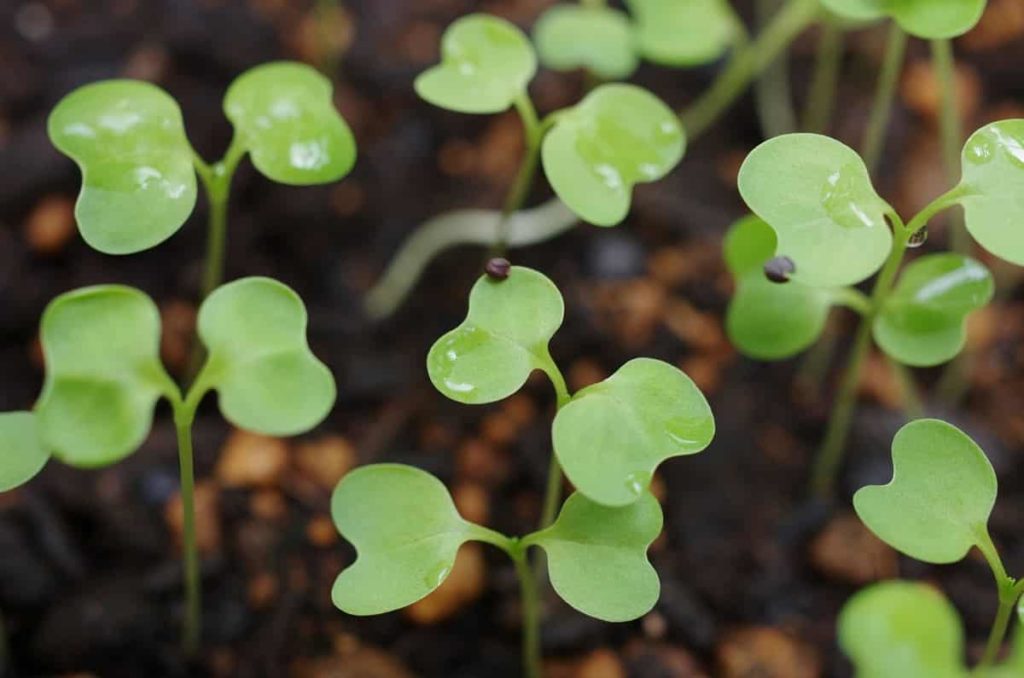
Vegetable seed germination chart
How long does it take for vegetable seeds to sprout?
Generally, it takes 7-14 days for most vegetables to germinate. You can frequently speed up their development by providing them with ideal settings. If you want your seeds to sprout, you’ll need to cover them with soil. However, light is necessary for germinating certain seeds, such as flower seeds. Thus, it’s best to cover them gently. Before purchasing new seeds, reviewing your current seed supply and checking the expiration dates before purchasing new seeds is a good idea before sitting down on the internet.
Seeds have a maximum lifespan of five years when properly stored. Temperatures around 42 degrees Fahrenheit with little humidity are often recommended. The soil temperature is a major factor in how uniformly your seeds germinate. Some cool-season plants, like lettuce, may not germinate in warm soil. Seeds of warm-weather plants like tomatoes and peppers might take up to 3 weeks to germinate if the soil is too cool.
As you probably already know, different vegetable plants have different temperature preferences; some do better in the spring and autumn, while others do better in the summer. During the seed-starting season, the optimal temperature for seeds is determined more by the soil temperature than by the ambient air temperature. Common springtime crops like onions, lettuce, and kale require soil temperatures somewhat lower than average to germinate successfully.
A range of around 65°F to 70°F is best for them. Seeds of peppers, tomatoes, and eggplant grow better in soil that is 85 degrees Fahrenheit warmer. With most of us keeping our houses on the colder side in the late winter, giving seeds with lower temperatures is not a problem throughout the seed starting phase. However, you can consider giving some extra heat if you are beginning chilly weather seeds in a wet and cold basement or an outdoor greenhouse.
In case you missed it: How to Grow Kumquat from Seeds and Cuttings: Check How this Guide Helps Beginners
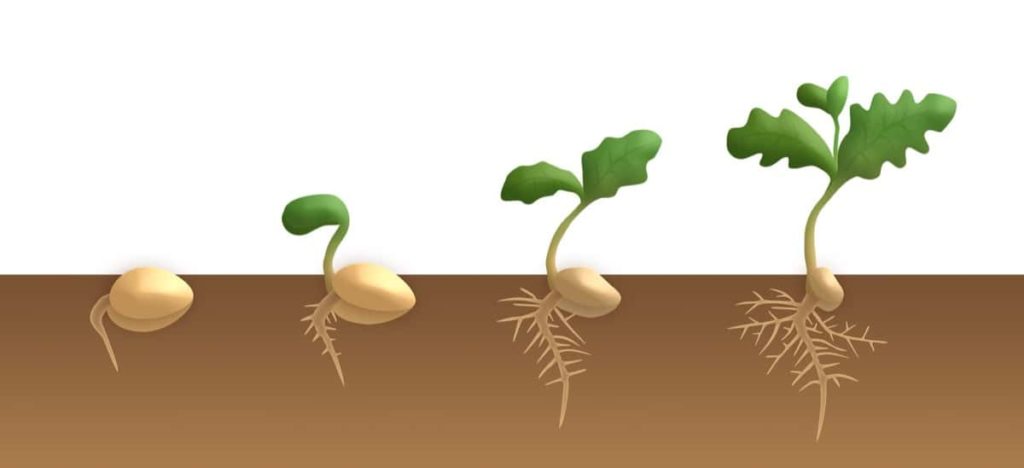
What vegetable seed germinates the fastest?
Some seeds can sprout in as little as a day if they are very new. Seeds of cabbage relatives (including bok choi, broccoli, kale, cauliflower, and others) and lettuce germinate quickly. Seeds like peppers, eggplants, fennel, and celery might take up to five days or more to germinate. Tomatoes, beets, chard, squash, and onions, among others, will require another three days.
Having prepared containers and soil is essential. When you see roots growing, it’s time to put them in the ground. If the roots grow too long, they will tangle with the paper towel and be challenging to remove. Simply hide the paper towel in the ground if this occurs. Picking up a single seed can seem impossible, but it’s pretty simple. A toothpick will do if you don’t have your fingers handy.
What temperature do vegetable seeds germinate?
Soil temperature is what determines whether or not a seed will germinate. Most people go by frost dates. However, a soil thermometer placed underground would provide more precise readings. Optimal germination temperatures for most vegetable crops are between 42 to 70 degrees Fahrenheit, with a minimum requiring just 36 F. You’ll see the key distinction between cool-weather crops like spinach, lettuce, and cabbage and warm-weather crops like eggplant, cucumber, tomato, and pepper.
Parsnips, for instance, need temperatures between 50 and 70 degrees Fahrenheit to germinate successfully. However, eggplants, tomatoes, and peppers need temperatures between 75 and 90 degrees Fahrenheit for optimal germination. The hard seed coat can be broken through by soaking it in water. The first step in the germination process for seeds is to become well-hydrated by consuming much water. Also, if the seeds get waterlogged from excessive irrigation, they will perish due to a lack of oxygen.
Oxygen is essential for plant life, just as it is for humans. Ultimately, you should guarantee that they drink the quantity of water written on the package. Don’t overwater them or allow them to dry up. In this area, the raised beds allow the sun, wind, and warmth to dry the soil many times in a single day. Planting seeds at the proper depth helps ensure that people have enough air to breathe. Too much depth in the soil prevents oxygen from reaching the seedling.
How often should I water vegetable seeds?
In the ground, plants require 1 inch of water every week. Of course, this does NOT imply weekly watering. Most of the time that isn’t effective. Including rainfall, plants thrive best with roughly three waterings each week. Water the plants twice a day if they are seedlings until they get established. But don’t mindlessly water the plants. Put your hands in the soil! When the soil is wet enough to be formed into a ball by hand, it is ready to be planted.
But if it crumbles in your hand or has a hard, cooked, or cracked appearance, it’s dry and needs watering. If you dig down an inch and find dry soil, you’ll know you need to water your plants. If you want your plants to dry out by night, it’s better to water them in the morning when the dew is still on the leaves. While morning watering is preferable, nighttime watering is OK if that is not possible. You can save water by not watering during the hottest day.
Even if it just rains a half inch, it can be the greatest time to water your plants. You must add enough water all at once to guarantee a deep enough soak (at least 5 or 6 inches) before seeing any results. Watering after a day or two will supply surface water, which evaporates quickly. Rainfall of a moderate intensity does not replenish groundwater. The plants may also wilt and seem particularly droopy. However, a little withering in the middle of the day due to the heat does not mean it needs watering.
In case you missed it: How to Grow Microgreens from Seed to Harvest: Check How this Guide Helps Beginners
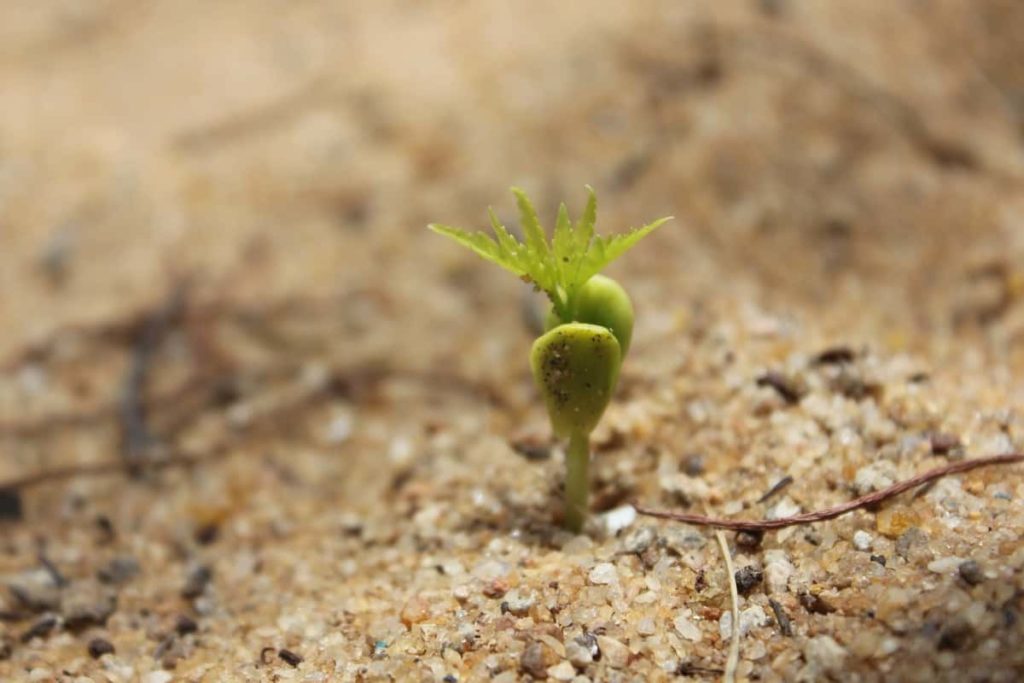
Some plants, particularly on exceptionally hot days, seem to experience a noon slump, which indicates the plant’s natural response to its environment. Visit your garden in the evening to observe whether the wilting plants have recovered. Do not water if they have returned and are in better health. In a tiny garden, a watering can, watering wand, or hose with a decent nozzle for watering close to the soil’s surface should suffice. Just put the hose next to the plant to get water to the roots of bigger or more densely planted plants.
Blocking the water flow with a board or rock can prevent soil erosion. Water can be channeled to the plants more effectively by digging a small trench around them and directing the water into it. Consider using “drip irrigation” if your garden has a foot or more between plants. Using hoses or plastic tubes with tiny pores, a very modest quantity of water is sent straight to the root zone, where it can profoundly affect plant health by ensuring that the plant never experiences periods of water stress. Down the rows, hoses or tubes flow water.
What vegetable seeds should be soaked before planting?
The majority of seeds need a longer soaking time than others. Particularly tiny seeds tend to cluster together in water, making them a pain to deal with afterward. Soaking can help jumpstart the germination process for larger seeds with thicker seed coats. Wrinkled seeds, like those of the pea, benefit greatly from soaking. These seeds need to be soaked in water to swell and be used for direct sowing.
Peas, pumpkins, beans, and other types of winter squash, sunflower, lupine, chard, beets, fava beans, and cucumbers are just a few examples of seeds that benefit from soaking. Soaking is recommended for all other media- to large-sized vegetable and flower seeds with thick coatings. Many bigger seeds can be direct-sown into your garden after being soaked for 12 to 24 hours. Seeds perform best when planted directly since transferring young plants can hinder their development and prevent their roots from spreading as far as possible.
Direct sowing is ideal, but it isn’t always possible due to lack of space or cold. You can find a lot of little seeds that don’t need to be soaked. Not because they lack a seed coat that requires moisture to initiate germination but because damp little seeds are impractical to sow. It is not necessary to soak smaller seeds like basil, chia, lettuce, black-eyed Susans, tomatoes, foxglove, and lisianthus.
In case you missed it: Mississippi Vegetable Planting Calendar (MS): Month Wise Garden Guide for Fall, Winter, Spring, Summer, Zone 7, Zone 8, and Zone 9
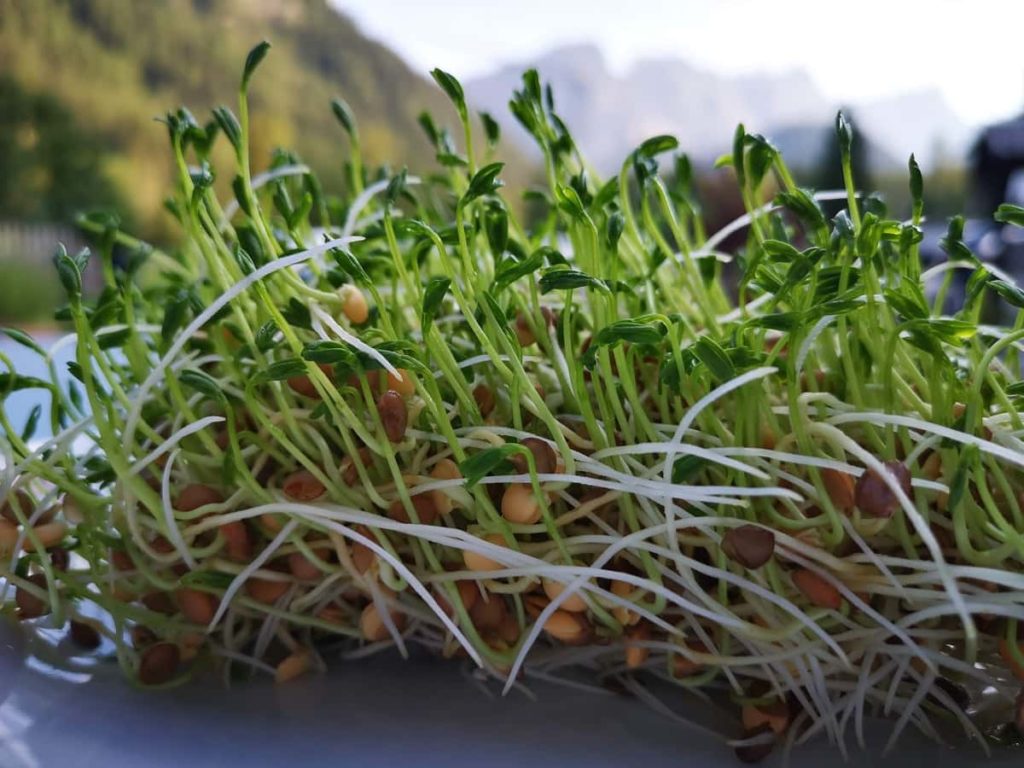
They can be sown in trays or planted directly in locations with consistent moisture by either method. The same principles apply; the seed coats must be wet for germination, but morning watering and maintaining the area in the shade can hasten germination and allow for rapid development. Tomatoes, basil, and chia, in particular, rely only on regular soil moisture for life since their seed coats absorb and store moisture around the seed to aid germination.
How many hours of light do seeds need to germinate?
Provide enough light for the plants to thrive. Young plants, known as seedlings, need 16 to 18 hours of sunlight daily. Seeds planted in the winter may need a brighter environment than usual. Lights for plants can be acquired for a little investment at most garden centers. Simple timers that switch lights on and off at predetermined intervals can significantly improve the efficiency of any growth system. Even a sun porch doesn’t supply enough light for healthy, compact growth of seedlings, research shows. Use artificial lighting.
T5 fluorescents are our preferred option because of their high lumen output, easy learning curve, and cheap lifetime cost. Once seedlings appear, relocate the light source within a few inches of the foliage. Lights should be raised as growth is monitored closely. No fertilizer is required when you put the seeds and when they start to sprout and grow. The seed itself contains all the necessary components for the plant to thrive.
Which two conditions do most seeds need to germinate?
Until the time is appropriate for germination, seeds lie dormant. A seed needs three things to germinate: water, air, and the right temperature. Many seedlings can’t germinate without the proper lighting. Some seeds prefer dark conditions to germinate, while others do best under bright light. Not all seeds will germinate successfully. When a plant is overwatered, it can’t get the oxygen it needs to grow. When planted too deeply, they deplete their energy reserves and die before they can emerge from the soil.
A lack of moisture prevents the plant’s germination process from the beginning and continuing under dry circumstances. Some seed coatings are impenetrable to water and oxygen until the coat softens. To remove the seed covering, soak or scrape the seeds. Examples include morning glories and locust seeds. For other seeds to flourish, the right conditions must be provided. Apple seeds need a period of cold storage before they can germinate.
In case you missed it: Minnesota Vegetable Planting Calendar (MN): Month Wise Garden Guide for Fall, Winter, Spring, Summer, Zone 3, Zone 4, Zone 5, Zone 6, and Zone 7
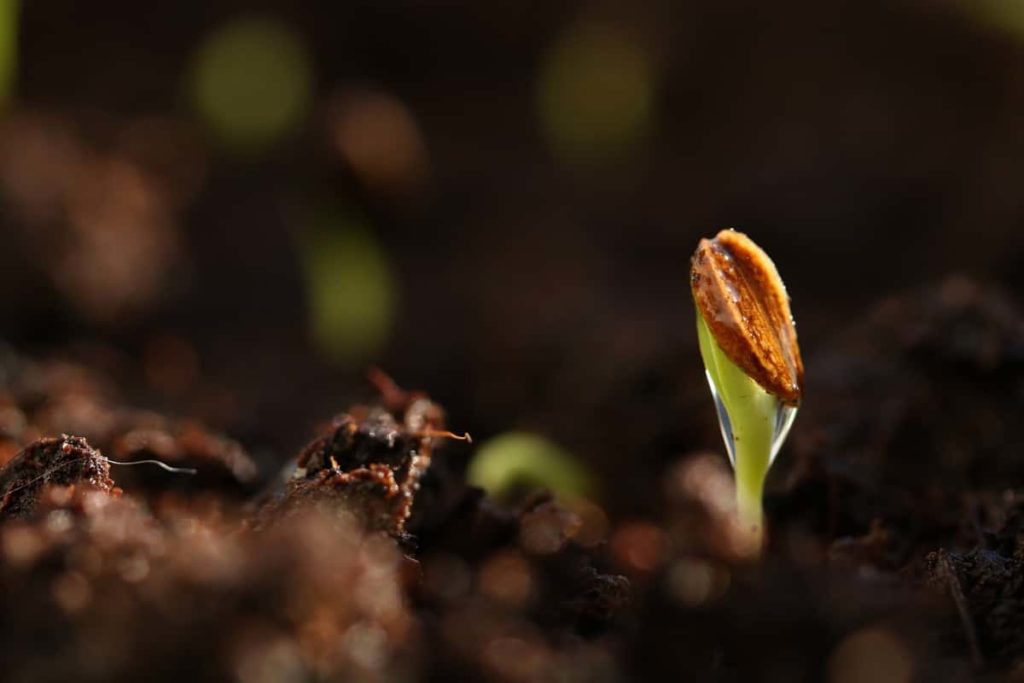
Should you water seeds right after planting?
The seedbed must be kept wet at all times to promote germination. Use a misting watering can or a hose with a fine-mist nozzle to water the plants without washing away the soil. If you want the top layer of soil to be wet at all times, you should water it often (at least once a day). While it’s simple to maintain soil moisture during the spring’s pleasant weather, doing so during the summer’s scorching heat requires shading the beds or covering them with mulch.
The young plants can crowd one another when the seeds germinate and sprout into seedlings. You should thin them out as directed on the seed package. Don’t be a softie when it comes to thinning; a plant population that’s too dense has the same impact as a weed invasion. The nutrition and maintenance needs of crops can range widely. Mulching is a time and energy saver since it prevents water from evaporating, keeps the soil colder, and reduces weed growth.
How long do carrots take from seed?
Germination of carrot seeds typically takes between 12 and 15 days. Don’t lose up if you don’t notice sprouting immediately away if the temperature is low, such as in early spring. It takes carrots around three to four months to reach full size. Carrots are ready for picking and eating whenever needed, but they have the finest taste and texture when they are about the size of a human finger. Carrots are a great space saver.
Carrots should be planted at a density of 16 per square foot or in rows no more than 2 inches apart. This implies that you can conceal them in the landscape or garden almost wherever there is a gap. Eastern swallowtail caterpillars feed on carrot leaves. Pick a spot with full or partial light and a garden bed with good drainage. Carrots, meanwhile, need a well-prepared substrate to flourish. They thrive in loose, deep soil. Two weeks before planting carrots, add worm castings and compost.
Carrots thrive in rich, friable soil, so a raised bed or planter can help grow them. Even a 12-inch deep container will do the trick. The fact that each garden is its entity is a big part of the appeal of gardening. Because of this, you’ll need to research which carrot kinds are most suited to your region’s weather and soil conditions.
In case you missed it: Top 25 Amazing Annual Shade Plants: How to Grow and Care in Your Garden
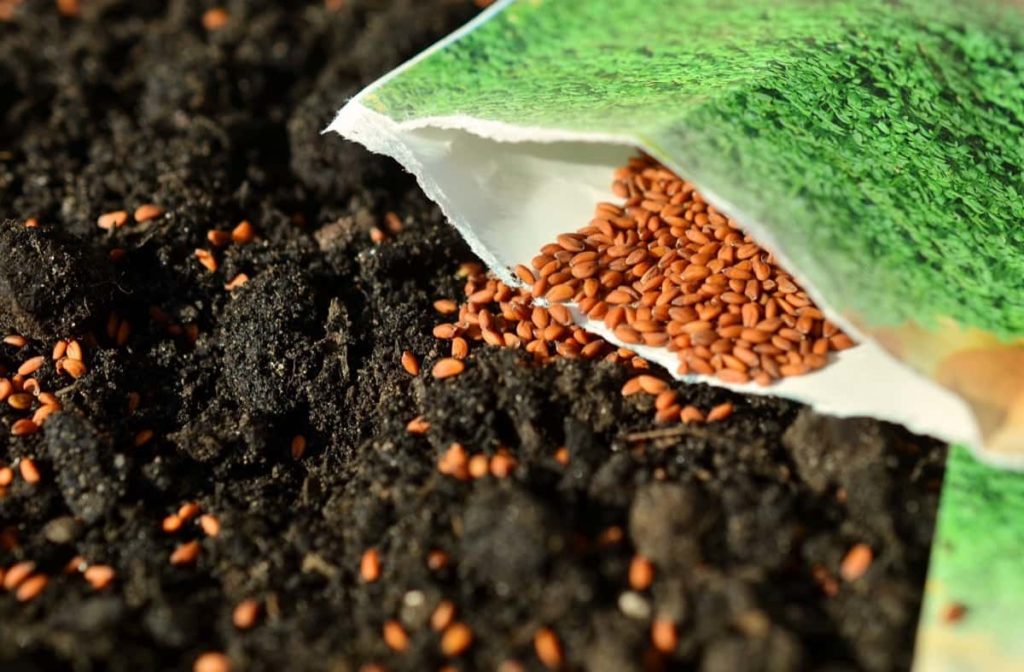
Do seedlings need direct sunlight?
Most seedlings need 12-16 hours of sunshine every day to germinate. If you’re starting seeds inside, a south-facing window is ideal, and you should rotate the container by a quarter turn every day, so the seedlings don’t grow leggy, too tall stalks in their quest to reach the light. Additionally, you can promote robust stem development by brushing the palm of your hand across the tops of the seedlings. It is recommended to place seedlings that have grown on a windowsill in direct sunlight. Strong stem development is aided by gently stroking the seedlings.
Vegetable seed germination chart
| Vegetables | Ideal soil temperatures for germination | Days for germination when ideal soil temperatures maintained |
| Beans | 60 to 85 ˚F | 6 to 16 days |
| Beets | 50 to 85 ˚F | 4 to 42 days |
| Broccoli | 60 to 85 ˚F | 10 to 14 days |
| Eggplants | 75 to 90 ˚F | 5 to 10 days |
| Cabbage | 45 to 95 ˚F | 3 to 14 days |
| Carrots | 45 to 85 ˚F | 7 to 21 days |
| Cauliflowers | 45 to 85 ˚F | 4 to 19 days |
| Corn | 60 to 95 ˚F | 3 to 21 days |
| Cucumber | 60 to 95 ˚F | 5 to 15 days |
| Muskmelon | 75 to 95 ˚F | Up to 1 week |
| Lettuce | 40 to 80 ˚F | 2 to 12 days |
| Onions | 50 to 95 ˚F | 3 to 13 days |
| Peas | 40 to 75 ˚F | 2 to 36 days |
| Peppers | 65 to 95 ˚F | Up to 3 weeks |
| Spinach | 45 to 75 ˚F | 5 to 10 days |
| Squash | 70 to 95 ˚F | Up to 1.5 weeks |
| Tomato | 60 to 85 ˚F | 5 to 10 days |
| Turnip | 60 to 105 ˚F | 1 to 5 days |
| Watermelon | 70 to 95 ˚F | Up to 1.5 weeks |
| Pumpkin | 70 to 90 ˚F | 7 to 10 days |
| Parsnip | 50 to 70 ˚F | 13 to 26 days |
| Asparagus | 60 to 85 ˚F | 10 to 52 days |
Conclusion
Ideally, that’s plenty to get you rolling. Fortunately, nature is often forgiving, so don’t worry too much about perfection. After all, you deserve some downtime as you care for your plants.
- Sheep Farming Business Plan for Beginners
- Aquaponic Farming at Home: A Step-By-Step Guide
- Profitable Village Farming Business Ideas in 2024
- High-Yield Aquaculture: Fast-Growing Fish for Farming
- Effective Fish Pond Construction Techniques for Beginners
- Irrigation and Water Management in Pineapple Farming
- Blossom to Harvest: Mastering Flowering and Pollination in Papaya Farming
- Pig Fattening Essentials: From Selection to Sale for Beginners
- Raising Wagyu Cattle: A Complete Guide for Premium Beef Production
- Soil Types and Their Water Holding Capacity
- Optimizing Irrigation Schedules for Coconut Groves for Enhanced Yield
- Espresso Your Garden: Coffee Grounds for Healthier Acid-Loving Plants
- The Best Soil Mix for Snake Plants: How to Mix Your Own Snake Plant Soil
- Green Thumb Success: Expert Tips for Cultivating Greenhouse Beans All Year Round
- Bloom All Year Round: The Ultimate Guide to Indoor Hyacinth Care
- Eco-Friendly Gardening: How to Make Liquid Fertilizer from Kitchen Waste
- Ultimate Guide to Grow Anise in Pots: Explore Seed Propagation to Harvesting
- Guide to Raising Chester White Pigs: Discover Breed Facts to Growth Management
- Mastering the Elegance: The Ultimate Guide to Weeping Cherry Tree Care, Planting, and Maintenance
- Ultimate Guide to Planting Garlic in Grow Bags: Growing Strategies for Beginners
- How to Fix Spider Plant Leaf-Related Problems: Natural and Organic Remedies
- 10 Reasons Why Your Tulsi Plant is Shedding Leaves: Home Remedies and Solutions
- Optimizing Growth and Yield: The Advantages of Palm Bunch Ash Fertilizer
- Utilizing Neem Oil Extract as a Natural Pesticide for Hydrangea
- From Soil to Harvest: Various Ways in Which Farmers Can Use AI Tools
- Steps to Encourage and Induce Citrus Flowers: A Comprehensive Guide
- How to Fix Snake Plant Leaf-Related Issues: Natural and Organic Remedies
- Transform Your Garden into a Fragrant Oasis with Raat Ki Rani (Night Blooming Jasmine)
- Discover the Ideal Chicken Breeds for Philippine Farms
- How to Create a Poultry Egg Farm Business Plan for Profits
- Grow Lemon Cucumbers Like a Pro: Insider Techniques for Bountiful Yields
- Ultimate Guide to Caring for Your Pink Princess Philodendron: Tips for Thriving Variegation
- Areca Nut Profit Per Acre: Calculating Yield and Cost of Cultivation
- How Kaveri Chicken is Becoming a More Profitable Breed in Indian Backyards
- Transform Your Barn: 9 Steps to Convert a Horse Stall into a Chicken Coop
- Exploring Suffolk Sheep Disadvantages with Limitations and Challenges
